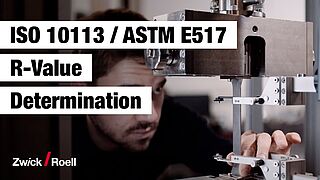multiXtens II HP
The extremely versatile extensometer with high accuracy in a wide measurement range for changing applications Download- 700 mm
- -70°C ... +360°C
- Tensile, compression, flexure tests
- Cyclic tests
- Metals
- Plastics
- Fiber composite materials
- Elastomers
- Films
- Rigid foam
- Wood
- Paper
- Other
The highly versatile extensometer for changing applications
The multiXtens II HP extensometer is a highly versatile extensometer for changing applications with very easy operation and little operator influence. It meets accuracy class 0.5 (ISO 9513) over the entire measurement range up to 700 mm. This allows for measurement of both small and large specimen extensions. Easily interchangeable sensor arms and adaptable transverse strain extensometers allow for a multitude of tests: tensile, compression and flexure tests, as well as cyclic tests on plastics, composites, elastomers, metals and composite materials, transverse strain measurement, fine strain measurement and tests in a temperature chamber.
- Fully automated system: automatic test area measurement (tool separation), automatic centering of the sensor arms, automatic L0 setting, automatic attachment and detachment of the sensor arms.
- Easy operation and minimized operator influence.
- Traceability: self-identification of the measurement carriages and installed sensor arms—the system knows automatically which components are being used.
- Robust extensometer, which can measure up to specimen break. An integrated safety mechanism protects the sensor arms at specimen break.
Transverse strain measurement
The choice is yours: from manual clip-on solutions and mechanical transverse strain extensometers to our videoXtens solutions:
Due to their simple operation and high reliability, the non-contact videoXtens transverse strain extensometers are increasingly becoming the option of choice.They also stand out with their accuracy class 0.5 (ISO 9513), high level of robustness and the evaluation options in the testing software.
The optical transverse strain extensometers videoXtens T-40 HP and videoXtens T-160 HP measure the change in width at the specimen edge without manual markings on the specimen thanks to the intelligent edge detection algorithm. Measurements can be taken at 1-10 measuring points and both the individual values and the average value are provided.
The videoXtens T-160 HP sets a new standard for r-value measurement: lower dispersion of the r-values, measurement over the entire gauge length in accordance with the recommendation of ISO 10113:2020 and other powerful functions have elevated it to this position.
The classic option among tactile transverse strain extensometers is the mechanical transverse strain extensometer, which measures via one, two or four measuring lines. It is mounted on the sensor arm extensometer and therefore does not apply weight on the specimen. It can be attached to and removed from the specimen either manually or fully automatically.
Alternatively, you can also use clip-on solutions for the change in width measurement.

